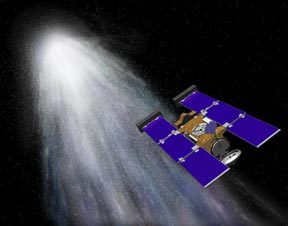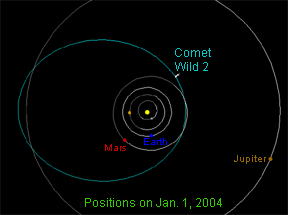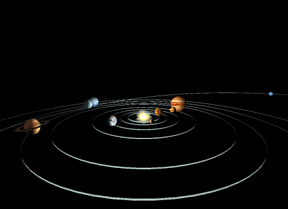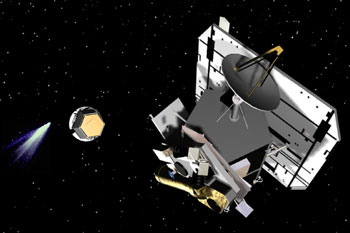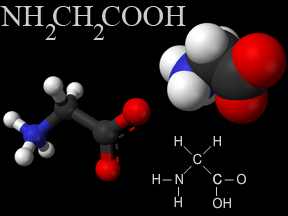STARDUST To Catch A Falling Star And Put It In Its Pocket
News story originally written on February 15, 1999
More precisely, Stardust will catch comet
particles and return
them to Earth. The spacecraft, which launched February
7, 1999, is working fine and on its way to a rendezvous with Comet
Wild-2 in
2004.
"Not only do we have to get to where we're going...but then we've got to
turn around and come home again," said Carl Pilcher, NASA's science
director for solar system exploration. "This certainly adds a new level
of complexity and difficulty."
Comets were formed at the same time as our Solar System and haven't
changed very much with time. Comet Wild-2 was recently dislodged from the
Oort Cloud and is relatively fresh
compared with historical ones such as Halley's comet. Scientists hope to
learn more about how our Solar System formed by studying particles from
the comet.
STARDUST will use a special material called aerogel to collect the comet
particles without damaging them. Aerogel is 1000 times less dense than
glass. The particles are only about the size of a grain of salt but are
moving at speeds over 13,000 mph. The particles will embed in the
aerogel, slowing down as they enter the material. The particles caught in the
aerogel will be dropped off in a reentry capsule that will parachute to Earth
in 2006.
Last modified January 11, 2006 by Randy Russell.






